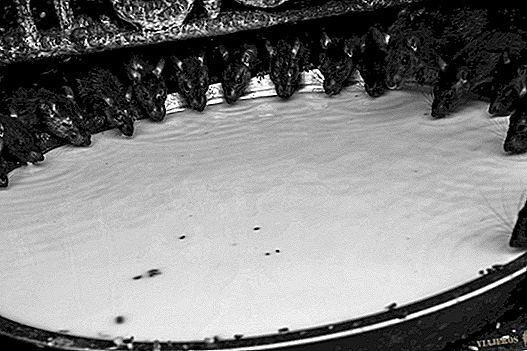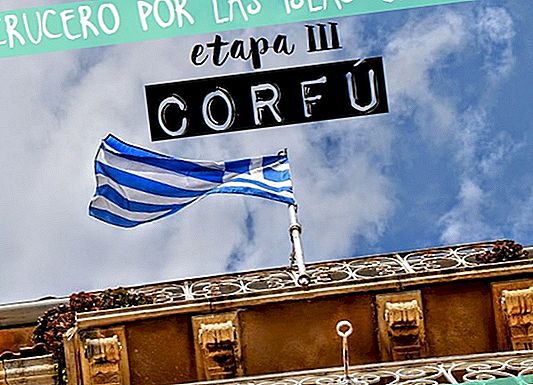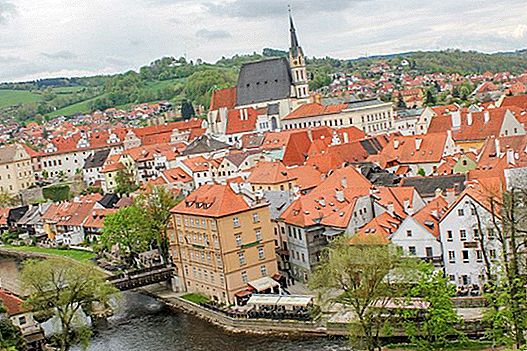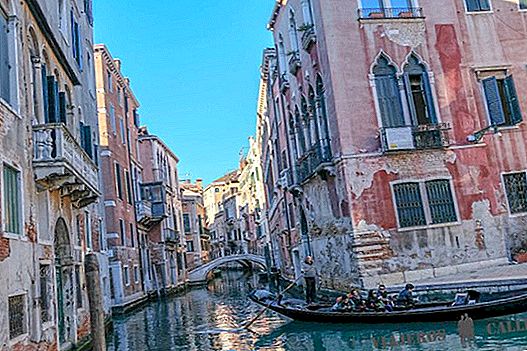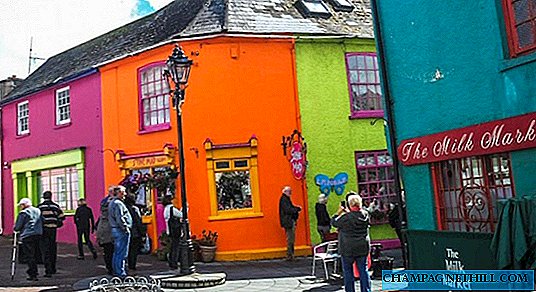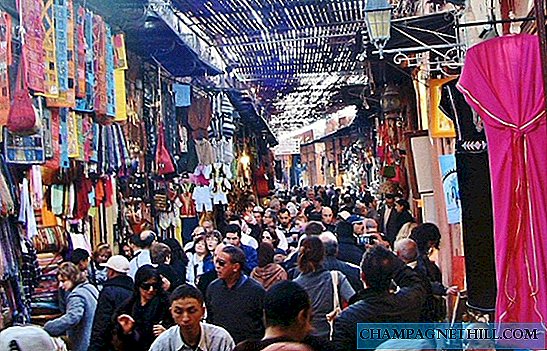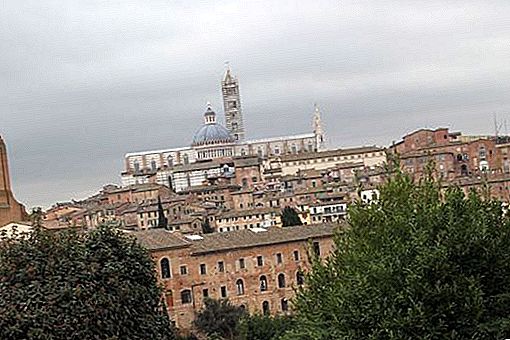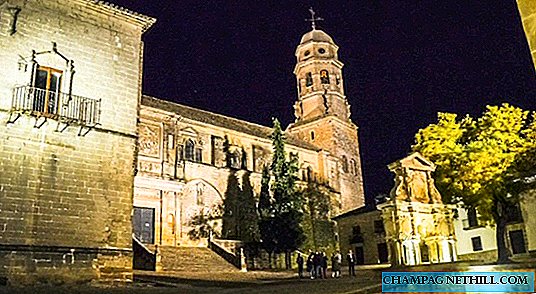
Cathedral and Fountain of Santa María in Baeza in Jaén
I had been wanting for a long time visit the province of Jaén, because it is the land of my ancestors and due to diverse circumstances, I did not know it.
I decided to start the trip knowing Baeza and along with Úbeda, which I also visited, turned out to be a wonderful surprise.
Baeza It is located in the geographical center of the province, 48 km from Jaen, surrounded by a green sea of olive trees in the region of the hill.

Corner of Baeza in Jaén
Curiously, you will not find the typical Andalusian town of white houses.
Baeza It takes you back in time to the medieval era, and its silent golden stone streets, its numerous palaces and its beautiful squares, will make you spend an unforgettable time walking through it and knowing its long history.
Since 2003 it has been declared, together with Úbeda, World Heritage by Unesco.
Baeza history
The origins of Baeza date back to the Bronze Age and through it have passed cultures such as Iberian, Roman, Visigothic and Muslim.

Corner of Baeza in Jaén
During the Muslim era it was the capital of an extensive territory that went from Guadalquivir to Sierra Morena, thus becoming the most important city in the province of Jaén, after the capital.
It had an intense commercial activity, with numerous souks and bazaars, until in 1227 it was conquered by Ferdinand III the Holy.
His intervention was decisive throughout the reconquest of Al Andalus, which is why it became known as Gavilanes Nest.
If in the Muslim era it was important, when it really acquires its greatest splendor it is in the sixteenth and seventeenth centuries, both in its activity in agriculture, livestock and industry, as well as culturally.
At this time the Baezana University and most of the civil and religious monuments of the city.

Baeza Cathedral in Jaén
San Juan de la Cruz or San Juan de Ávila were some of the many illustrious characters that went through Baeza.
Since the sixteenth century, the nerve center of the city is the large arcaded plaza, where the names of the old trade unions are still preserved and where the city celebrations were celebrated.
As a curiosity to tell you that many historical films have been shot here, including the Captain Alatriste, scenarios that you imagine perfectly walking through its streets.
What places to see in Baeza
When I considered doing this trip, I decided that it was best to sign up for a tour to visit Baeza, whose guide was super friendly and made us a very pleasant tour.

Baeza Cathedral in Jaén
In a couple of hours you place yourself perfectly in the city, and then on my own I dedicated myself to enjoying its corners and delving into what interested me most.
Here I indicate what are the most interesting places to see and visit in Baeza, where after meeting them I already warn you that you will stay with the desire to return.
Baeza Cathedral
This Andalusian province has two cathedrals, one in Jaén capital and another in Baeza, and the bishop spends six months in each of them.
This magnificent Cathedral It is located in the place where the old mosque was located.
With the entry of Alfonso VII in the city in the twelfth century, the conquest of Baeza and a small church begins to be built in the same place where the mosque settled.

Baeza Cathedral in Jaén
Went with Ferdinand III the Holy In the thirteenth century, when the city is already Christianized, the building of the cathedral begins and is consecrated as a Christian temple.
Andrés de Vandelvira, the most prestigious Renaissance architect of the time, was responsible for its subsequent reconstruction.
What you will see in the Cathedral is a pure rebirth, although with remains of other styles that have been preserved.
These remains can be seen in vaults or in the Gothic rosette of the 14th century that is located on the west facade of the Cathedral, Above the Gate of the Moon, through which you will access the interior and the cathedral cloister.
In the south wall you will find the Gate of Forgiveness, also in gothic style, and on the main facade, the Nativity Cover.
The temple is divided into three ships covered with empty vaults; tracery only are those of the cruise and those of the head.

Baeza Cathedral in Jaén
Although it has many chapels and all have interest, those of Saint Joseph and the Golden Chapel designed by Andrés de Vandelvira.
Upon entering you will see a beautiful fence of double reliefs, with a lot of iconographic decoration, and at the top of it, the image of the Virgin with the Child.
This gate enclosed the old choir that was suppressed in the twentieth century.
The Processional Custody, is declared Well of Cultural Interest and it is one of the most important pieces of the cathedral.

Baeza Cathedral in Jaén
With a height of 2.20 meters, and a very special meaning for Baezanos, is a fine jewel of baroque art chiseled in silver with some copper areas.
The altarpiece is also baroque, and consists of two bodies and three streets separated by Solomon columns; in the upper body you have the figure of San Andres as patron of the city.
The sacristy was built in the place where there were three other chapels, and it has a very nice Plateresque style access door, the San Andres Gate.
The Baeza Cathedral It has a rectangular floor cloister and a tall body, which you can see from inside it.
From the cloister you can visit the Cathedral Museum, with different rooms where you can see objects of great value both in furniture and in religious clothing or paintings.

Tower of the cathedral of Baeza in Jaén
The cathedral tower It was originally the minaret of the mosque; of square plant, in the edges it has granite shafts.
On the outside of the cathedral tower you can see in each corner three of these four granite columns that it has.
The legend says that people who have the age to marry have to pass their hands on full moon nights through one of them, the one you will see most pierced, and within a year their wish will be fulfilled.
Town Halls High in Baeza
This historic building is next to the cathedral, attached to it as if it were part of it.
It was the manor house of the Cabrera, was yielded to Baeza Council at the beginning of the 16th century, and thereafter became Town Halls, one of the most beautiful and most traditional buildings in the city.

Town Hall in Baeza in Jaén
On the west facade it shows the gothic entrance door and two gothic windows, among which are the royal shields of Juana the Mad Y Philip the Beautiful.
On the north facade you will see a beautiful balcony, and next to it, the imperial shield of Carlos V.
Currently the building is used by the Conservatory of Music.
TOURS and EXCURSIONS in BAEZA and UBEDA
- Guided tour in Baeza
- Guided tour in Ubeda
- Ubeda and Baeza in full
- Night tour in Baeza
- Private tour in Baeza and Ubeda
Fountain of Santa Maria in Baeza
You will find this great fountain as soon as you enter the Santa Maria Square, in a privileged location between the Cathedral, the Town Halls High and the Seminary of San Felipe Neri.
It was built in the mid-16th century by the Baezano master and architect Ginés Martínez and they say that it is one of the most beautiful sources in Andalusia.

Fountain of Santa María in Baeza in Jaén
You will see a type construction Renaissance with a lower body in the form of a Roman triumphal arch, with three openings, and a column structure with two fronts and eight caryatids on the pilasters.
The top ends with a classic pediment where you can see the shield of Philip II and that of the city protected by two atlantes.
The source water came from the Celadilla Mine, which was escaped in the Plains Plateau located northwest of the city.
When the water reached the city, it accumulated in a large tank, also called Water Ark, and from there by means of pressurized pipes they took the water to the different public sources that had Baeza.
Tower of the Aliatares in Baeza
It is also known as clock tower and is located in the historic center of Baeza.

Aliatares Tower in Baeza in Jaén
If you do not look closely, it is possible that this tower will go unnoticed, because at its sides it has more recent constructions, and you can be under it and do not realize it.
It is an Arab tower that is part of the old Muslim wall of the twelfth century, and from it defended the missing Cañuelo Gate and the next one Barbican.
Rectangular and 25 meters high, it has been restored several times.
On the facade you will see a clock that was placed in the 19th century, as well as the battlements that are from the last century, imitating those of the Villalar Arch.
This tower has been a prison for nobles, a recruitment center and even a loft.

Fountain of the Lions in Baeza in Jaén
Plaza del Populo or de los Leones in Baeza
It is one of the most charming squares that has Baeza.
The square presides overFountain of the Lions, an archaeological monument that comes from the Roman city of Cástulo.
The female figure that crowns the fountain is the Iberian princess Imilce, who was Hannibal's wife, who is protected by four lions at her feet.
For the city of Baeza This fountain symbolized the pride of having become a place where the nobility and clergy came.
Here the tallest buildings of the time were concentrated, such as the old butcher shop and the Civil Hearing and Public Notices what is the current tourist office.

Public Notaries in Baeza in Jaén
Old Butcher Shop in Baeza
The old butcher shop It has had many uses throughout history, as it was a leather dryer, historical archive and museum, as well as the headquarters of the Youth and Sports Board, and is currently the headquarters of Courts.
The facade is formed by two very different bodies.
In the first one you will see a door with a window and three windows with bars, and in the second, a viewpoint with square pillars, and in the center, a large imperial shield.
Civil Hearing and Public Notaries in Baeza
The building of the Civil Hearing and Public Notices it was in his day called House of the Pópulo since on one of its balconies the image of the Virgin of the Pópulo.

Corner of Baeza in Jaén
Today the image does not exist, but the legend says that when Baezan warriors were going to fight against Muslims, they made a stop to prostrate themselves before it.
It is of Plateresque style and was built by breaking the Muslim wall that was just behind.
It consists of two floors, and in the lower body you will see six hollows adintelado between terraced columns with seven lions lying and six shields of the city.
In the upper body there are imperial shields and that of the corregidor, as well as windows with balustrade columns.
Villalar Arch and Jaén Gate in Baeza
A corner that will surely get your attention when you enter the Pópulo square, ishe Villalar Arch and the Jaén Gate.

Villalar Arch and Jaén Gate in Baeza
These are two contiguous steps that opened in the wall, the arch being built to commemorate the Battle of Villalar in which the troops of Carlos I they beat the villagers of Castilla.
Jabalquinto Palace
This beautiful building declared a historical-artistic monument has a beautiful style facade Elizabethan gothic, which is what will attract your attention and that will remind you of the house of the towers of Úbeda for its decoration.
It is next to the Seminary of San Felipe Neri and currently part of the headquarters of the Antonio Machado International University of Andalusia.
It was commanded to build in the second half of the fifteenth century by a cousin of Fernando the Catholic, Juan Alfonso de Benavides Manrique, Lord Jabalquinto.

Jabalquinto Palace in Baeza in Jaén
As a curiosity tell you that the poet's daughter Jorge Manrique he married the son of Marquis of Jabalquinto.
The building has had many uses, it was a student residence and school rehabilitation workshop Baeza Heritage.
In the facade they emphasize the great amount of pinnacles that it has and the heraldic shields of the founders.
Inside you will find a double-arched Renaissance courtyard, with marble columns and shields in the enjutas, less those of angle in which you will see couples of children, and an impressive baroque staircase of imperial type with a lot of decoration and the half orange vault .
Seminary of San Felipe Neri in Baeza
You will find the building of the old seminar right in front of the Baeza Cathedral and since 1969 is the headquarters of the Antonio Machado International University of Andalusia.

Seminary of San Felipe Neri in Baeza in Jaén
It was founded in 1660 by the bishop Fernando de Andrade and Castro.
Like all these buildings, it has undergone many renovations, the most important being the one that was carried out in 1990 to convert it into a University.
On the outside that overlooks the Santa Maria Square, you can see a very sober facade, almost without decoration and on its walls social criticisms of the time appear in inscriptions made by the students themselves.
On this facade is the half-point main door framed by pilasters and a split pediment at the top.
The door to the other facade is closed and on top of it you can see the stone figure of San Felipe Neri.
The interior is distributed around three courtyards with columns, two of them with galleries.

Old University in Baeza in Jaén
Old University of Baeza
At the end of the 16th century, long before the universities of Jaén or Úbeda were founded, the intellectual and scholarly spirit of the Baezanos led them to create their own university.
It is one of the fabulous civil architecture buildings of Baeza and one of the few of mannerist style from the city.
The structure is typical of Renaissance palaces, with a double arch arcade and a covered staircase.
In the courtyard is the Auditorium or Assembly Hall, which surprises by the impressive acoustics.
The first graduations date back to 1549, these students becoming professors of the University, this being for a long time the best in Andalusia.

Monument to Antonio Machado in Baeza in Jaén
With time and by the parish character of the Baeza University, there was a phenomenon of exaltation among students that became known as "the lights."
As a consequence, the Court of the inquisition and jailed the most prominent professors.
It is currently a secondary school, where Antonio Machado He taught French grammar for seven years.
It is very curious to see this classroom through which time has not passed and is preserved as it was when he was a teacher.
In Baeza He wrote some of his famous poems as “the gray olive groves"Or"the happy fields of Baeza”.

Church of Santa Cruz in Baeza in Jaén
Church of Santa Cruz in Baeza
In front of Jabalquinto Palace you will find this church of romantic style, which has been preserved in perfect condition.
It is from the end of the 13th century and the reason for its construction was the conquest of Baeza by Ferdinand III the Holy.
The main facade was covered by neoclassical structures and is seen in the decoration of the capitals of the columns.
Inside this small church, the Mudejar roof was changed to the one it currently presents as it was very damaged.

Jabalquinto Palace in Baeza in Jaén
It is divided into three naves with wooden coffered ceilings that are supported by stone columns.
The central nave ends in a barrel vault and a semicircular apse covered with fresco paintings dating from the early 16th century.
The walls and the apse are made of masonry, and also has a Visigothic arch inside which is preserved from previous buildings.
Baeza Town Hall
The building that currently houses the Baeza Town Hall is a Plateresque style palace which was used as a jail and Baeza House of Justice.
It is declared National Monument and it is one of the most original and valuable buildings of the Andalusian plateresque.

Baeza Town Hall in Jaén
In its lower body two doors open, the one on the left gave access to the old prison, and the one on the right, to the House of Justice.
In the upper part there are four balconies with different shields between them, and on the ledge you can see figures of children, sphinxes, eagles and acanthus leaves.
Inside the town hall, look at the Renaissance plasterwork in the lobby, as well as the Renaissance coffered ceiling of the Plenary Hall.
In front of the town hall is the house where he lived Antonio Machado during the seven years he resided in Baeza, as indicated on a plate.
Walking through the city you will find many palaces that today are hotels or centers dedicated to various activities.

Old University in Baeza in Jaén
Museum of the Culture of the Olive Tree in Baeza
Being in Baeza you can't stop knowing everything related to the oil culture, for what you can do the visit ofOlive Culture Museum.
And of course, you can also sign up for a guided tour of an oil mill, where you can see how the oil is made, as well as taste its different varieties.
You will not regret these visits, apart from becoming an expert.
What to eat typical in Baeza
In the great porticoed square of Baeza you will find many restaurants where you can enjoy the delicious Baeza gastronomy, always seasoned with extra virgin olive oil.
He Baezana cod, he loin of orza, the pipirrana, he Ajíli-mojíli They are some of the typical dishes, as well asochios that you can buy in bakeries and patisseries, both in its salted version with paprika and sweet with sugar.
We cannot forget thetypical sweet of Baeza, the Virolo, a puff pastry that is covered in sugar and whose recipe is a well-kept family secret.


